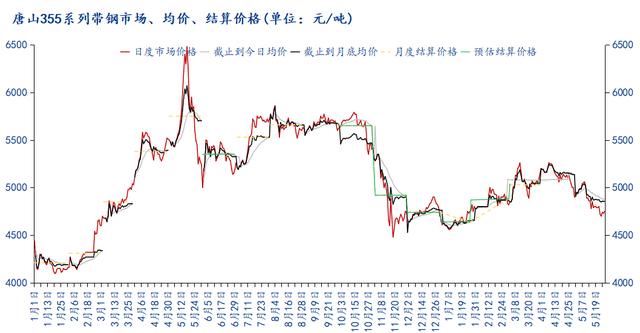无线充电技术国外发展情况(未来的无线充电技术会是什么样)

WPC无线充电联盟(Wireless Power Consortium)是一个非营利国际标准组织。无线充电联盟全球的 600 多名成员致力于推动无线充电使用的安全性和全球兼容性。Qi 标志和“Qi”名称是无线充电联盟的注册商标。Qi 认证以及 Qi 标志的使用均经由无线充电联盟授权。

Menno Treffers是WPC无线充电联盟的主席,他也是IEEE-ISTO的理事会成员,ISTO是一家致力于促进科技产业标准制定的非营利性组织。Menno Treffers拥有Leiden University的物理学博士学位。

充电头网很高兴能够独家专访WPC主席Menno Treffers,以下是此次专访的完整内容实录:
1、充电头网:Qi standard above 5W has the fragmentation problem, and various mobile phone manufacturers have launched their own proprietary extensions/agreements. Is this fragmentation problem currently unresolvable?
充电头网:5W以上Qi标准规范出现碎片化问题,各家手机厂商推出自家的私有协议。这一碎片化问题目前是否无法解决?
Menno:This ‘fragmentation’ situation as you refer to it, will likely resolve itself. We believe there are 2 two trends work against fragmentation:
(1) Consumers expect that their phone will charge everywhere. They also expect that their phone will fast-charge everywhere. This drives phone manufacturers as well as charger-manufacturers to support standardized fast charging.
(2) Keeping wireless charging safe is more challenging when the power levels go up. Above 5 Watt, it’s increasingly important to make sure that phones are charged by properly implemented (safe) chargers. That drives phone manufacturers to support standardized fast charging when they increase the power level to 10-15 W. The authentication feature that will be introduced by the Wireless Power Consortium in version 1.3 of the Qi Specification makes the standardized fast charging solution very attractive.
Menno:你所说的这种“碎片化”的情况很可能会自行解决。我们认为有两种趋势可以对抗分裂:
(1)消费者希望他们的手机在任何地方都能充电,他们还希望能在任何地方快速充电。这促使手机制造商和充电器制造商支持标准化快速充电。
(2)当充电功率水平上升时,保证无线充电安全会更具挑战性。超过5瓦,确保手机使用正确(安全)的充电器充电变得越来越重要。这促使手机制造商在将功率水平提高到10-15W时支持标准化快速充电。在Qi规范1.3版本中,WPC无线充电联盟将引入身份认证,使标准化的快速充电解决方案非常具有吸引力。
2、充电头网:What will be the major feature updates for Qi?
充电头网:今后的Qi标准规范更新,主要侧重点是哪些大的方面?
Menno:The future of wireless charging will include more power, and will add the additional safety features needed to keep products safe when charging wirelessly above 5 Watt.
Menno:无线充电的未来将包括更高的功率,并将增加额外的安全功能,以便在无线充电无线超过5瓦时保持产品安全。
3、充电头网:Some companies give the feedback that WPC membership fee and EPP certification fee are expansive, will those be lowered in the future?
充电头网:有些企业反映WPC会员费、EPP认证费偏高,未来会下调吗?
Menno:The WPC doesn’t determine the fees charged by the test labs. The test labs compete and manufacturers are free to chose the lab they work with. We also have low-cost options. Products that use a Qi Certified subsystem, for example, need not be tested at all.
In terms of membership fees, the WPC offers a range of affordable options based on the size and stage of the organization.
Menno:测试实验室所收取的费用并不由WPC决定。测试实验室相互竞争,制造商可以自由选择决定使用哪个实验室进行测试。同时,WPC也提供低成本的选择:例如,包含Qi认证子系统的产品将不再需要进行测试。
在会员费方面,WPC根据组织的规模和发展阶段提供一系列相应的选择。
4、充电头网:As a consumer, I would like to know when do you think Qi will be like Wi-Fi: available almost anywhere and anytime?
充电头网:像Wi-Fi一样普及的无线充电技术,我们广大消费者何时才能用上?
Menno:It’s hard to predict when Qi will reach the point of ubiquity that Wi-Fi has achieved. It depends in the percentage of people that have a Qi-capable phone. Today that percentage is still low.
Qi is still a feature seen mostly in high-end smart phones, but we expect to see this feature start to appear in mid-range phones. When the percentage of people that can use wireless chargers has grown, the business case for deploying wireless chargers will improve and we will see more places that offer wireless charging. Today, the home and office are the locations where Qi is used most, followed by in automobiles. There are almost a hundred different models of cars that have Qi-certified wireless chargers installed. It will be a natural shift to more charging locations, from office building, meeting rooms to public spaces such as hotels, restaurants and transportation depots. We already see a strong indication of this trend throughout Europe where there are thousands of installations at locations in large urban areas.
Menno:很难预测Qi什么时候会达到像Wi-Fi一样无处不在的程度。这取决于有多少人使用有Qi功能的手机(Qi手机使用百分比)。今天这个百分比仍然很低。
Qi现阶段常常是高端智能手机配置一个的功能,我们预计Qi将开始出现在中端手机中。当有可能使用无线充电器的人数增加,部署无线充电器的商业案例将会更有吸引力,我们将看到更多使用和提供无线充电的场所。今天,家庭和办公室是Qi最常用的地方,其次是汽车。有近百种不同型号的汽车都安装了Qi认证的无线充电器。出现更多的无线充电地点:从办公楼会议室,到诸如酒店,餐馆和交通站点等公共场所,将是一个非常自然的趋势。我们已经在整个欧洲看到了这种趋势的强烈迹象,在大城市地区已经有数千个安装点。
5、充电头网:For mobile phone to use wireless charging, charging distance and power are the two major bottlenecks of using Qi. When can this problem be solved?
充电头网:对于手机无线充电,充电距离和功率是Qi无线充电的两大瓶颈,这个问题什么时候可以解决?
Menno:The power levels are increasing gradually. That is simply a matter of time. The first wireless chargers delivered 2.5W. Now all chargers deliver at least 5W, many deliver 7.5W, and some deliver up to 15W. The number of 15W chargers will grow and then the first 20W chargers will appear.
Power over distance or through the air is a completely different matter. It will never be possible to charge all phones in a house by installing a single charger that delivers power over many meters through the air, like one Wi-Fi base station delivering Internet for the whole house. The problem is that transmitting power through the air is very inefficient. You need to transmit huge amounts of power (hundreds of watts) to deliver 5W over just 1 meter! And that makes it unsafe as well as inefficient. Power through the air certainly is possible, but only at very low power levels (microwatts). It will never be enough to charge a phone and we will only continue to see this exist in token, one-time proof of concept live demos and not in commercial application because of the safety and energy inefficiencies I mentioned.
Menno:功率水平将会逐渐增加,只是个时间问题。首批无线充电器只提供2.5W的功率,现在所有的无线充电器都能提供至少5W的功率,其中许多可提供7.5W的功率,有些可提供高达15W的功率。15W充电器数量将持续增加,然后我们会看到20W的无线充电器的出现。
远距离充电或通过空中传输电力则是完全不同的事情。你永远都不可能像一个Wi-Fi基站为整个家庭提供互联网一样,仅通过安装一个可以在空中传输数米电力的充电器就能实现给家中所有的手机充电。因为通过空中传输电力是非常低效的。你需要发射传输巨大的功率(数百瓦)才能在1米范围内提供5W功率!而且这使得它既不安全又效率低下。通过空中传输电力当然是可能的,但只能在非常低的功率水平(微瓦)。它永远都不够给手机充电,我们只会继续看到这存在于象征性的、一次性的概念验证现场演示中,而不是在商业应用中,原因在于我所提到的安全和能量效率低的问题。
6、充电头网:WPC has made a lot of efforts in making the wireless charging safe. But for consumers they seem to care more about charging speed and distance. Each (WPC and consumer) focuses on a different aspect: safety and performance. The former is conservative, the latter is more aggressive. How to balance the two different needs?
充电头网:WPC在无线充电安全性方面做了很多努力,但普通消费者似乎更关心充电速度以及充电距离,各自关注的重点分别对应安全和性能,一个保守,一个激进,WPC怎么平衡这两者之间的关系呢?
Menno:From the WPC standpoint, there is no conflict. Consumers also want safe products. Who wants to buy a product that can burn down your house?
Our priorities are:
(1) consumer safety (no burns or fire or electric shock)
(2) product safety (no damage to phones)
(3) compatibility (all phones must charge on all chargers)
All three of these are key elements to helping ensure quality. Manufacturers of products can focus their attention on differentiating their products with charging speed, product cost, and design. But, fundamentally, they have to make sure their products meet our three priorities.
Menno:从WPC的角度来看,并没有任何冲突。 消费者也想要安全的产品。 谁想购买可能会烧毁你房子的产品呢?
WPC的重点是:
(1)消费者安全(避免烧伤、火灾、或触电危险)
(2)产品安全(避免手机损坏)
(3)兼容性(所有手机可以在所有无线充电器上充电)
所有这三项都是帮助确保产品质量的关键因素。产品制造商可以将注意力集中在充电速度、产品成本和产品设计上来进行差异化。但是,从根本上说,他们必须确保他们的产品符合我上面提到的三大重点。
7、充电头网:People think AirFuel is a competitor of WPC. What’s your view of AirFuel? Is it possible that WPC and Air-Fuel, the two biggest wireless charging alliances, will merge some day?
充电头网:在一般人看来AirFuel是WPC的竞争对手,您怎么看待AirFuel无线充电联盟?WPC和AirFuel两大无线充电联盟,将来有合并的可能吗?
Menno:We – and the mobile device ecosystem — don’t see Airfuel as a competitor any longer. Competition of standards has ended in the market, between these two approaches. It was the market that decided this early last year and essentially, the manufacturers chose which standard they implement in their products and they are free to include any standard they like – Qi prevailed. Therefore, the WPC doesn’t see the need to merge with the AirFuel alliance.
Menno:我们 – 以及移动设备生态系统 – 不再将AirFuel视为竞争对手。在这两者之间,市场上的标准之争已经结束。是市场在去年年初决定了这一点,基本上,制造商选择了他们在产品中实施的标准规范,他们可以自由地选择他们喜欢的任何标准规范—Qi占了上风。因此,WPC没有看到有与AirFuel联盟合并的必要性。
8、充电头网:What are the technology trends for wireless charging in the next couple of years?
充电头网:能谈谈无线充电技术未来几年的发展方向么?
Menno:There will be a couple trends in the coming years — a gradual increase in power and more sophisticated safety measures.
Menno:未来几年将会有下面一些趋势—逐步增加充电功率和更为复杂的安全措施。
9、充电头网:For mobile phone charging, do you see the continuous improvement of wired fast charging technology has an impact (or any threat) on the wireless charging market?
充电头网:关于手机充电领域,有线快充技术的不断完善对无线充电市场有影响吗?或者威胁?
Menno:Wireless charging and wired charging are used in different circumstances. Wireless charging is about convenience. Using one hand to place the phone on the charger on your desk, in your car, or bedside. Pick it up, put it down again, without inserting a connector, is a better experience. On the other hand, if your battery is low, and you are in a hurry to charge your battery, a wired charger can be more convenient. The concern that is being discussed by government entities is how to achieve a universal wired charger and it will be interesting to see how that is addressed. The reality is with Qi wireless charging, we now have a universal wireless charging method already and the backward compatibility of the Qi standard guarantees this.
Up until now, we have not seen a threat nor do we expect one in the future. Most people use and will continue to use both methods depending on the circumstances.
Menno:无线充电和有线充电在不同情况下使用。无线充电是为了方便。 只需一只手将手机放在桌面,车内或床边的充电器上。拿起它,放下它,不用用手插入连接线,是一种更好的体验。另一方面,如果您的电池电量不足,并且急于为电池充电,有线充电器会更方便。 政府机构正在讨论的问题是如何实现通用有线充电器,我们很有兴趣看到这个问题是如何解决的。实际情况是Qi无线充电,我们现在已经有了通用的无线充电方法,Qi标准的向后兼容性保证了这一点。
到目前为止,我们不认为有线充电有威胁,预计未来也不会有。大多数人会根据具体情况使用并将继续使用这两种方法。
10、充电头网:At last year’s Apple event, it was said that “the future is wireless”. What’s your interpretation of this sentence? Do you think wireless charging will replace the wired charging some day?
充电头网:去年苹果iPhone发布会上有一句经典的slogon:The future is wireless. 您怎么理解这句话?未来无线充电会取代有线充电吗?
Menno:Wireless really is the future and I believe that most would agree with that. But wires have advantages too, so wires will not disappear anytime soon quickly. It’s the same as with Wi-Fi. If you want really fast Internet, a wired connection is the solution. But most people now don’t bother any more. Wi-Fi is fast enough for most applications and more convenient.
Menno:无线真的是未来,我相信大多数人会同意这一点。但“有线”也有优势,因此它不会很快消失。和Wi-Fi的道理一样,如果你想要真正快速的网络上网,有线连接就是解决方案。但现在大多数人都不再用了,因为Wi-Fi对于大多数情况来说就已足够快并且更方便。
关于无线充电联盟
WPC无线充电联盟成立于2008年,是由600多家公司会员组成的开放性的合作性的标准制定组织。无线充电联盟会员包括苹果、华硕、贝尔金、博世、佳能、易冲无线、戴尔、德尔福、谷歌、海尔、华为、宜家、联想、LG、联发科、mophie、恩智浦、意法半导体、松下、皇家飞利浦、三星、索尼、TDK、威瑞森无线和小米等。
这些公司会员来自世界各地大大小小的生态系统,有合作伙伴也有竞争对手。大家相互合作的目的只有一个:制定并不断改进世界上最有用、最安全和最高效的无线充电标准。使用Qi标准的产品必须经过严格测试,以确保其安全性和互操作性。只有通过独立实验室测试的产品才能使用Qi标志,并被认为是合格的Qi认证产品。
,免责声明:本文仅代表文章作者的个人观点,与本站无关。其原创性、真实性以及文中陈述文字和内容未经本站证实,对本文以及其中全部或者部分内容文字的真实性、完整性和原创性本站不作任何保证或承诺,请读者仅作参考,并自行核实相关内容。文章投诉邮箱:anhduc.ph@yahoo.com






